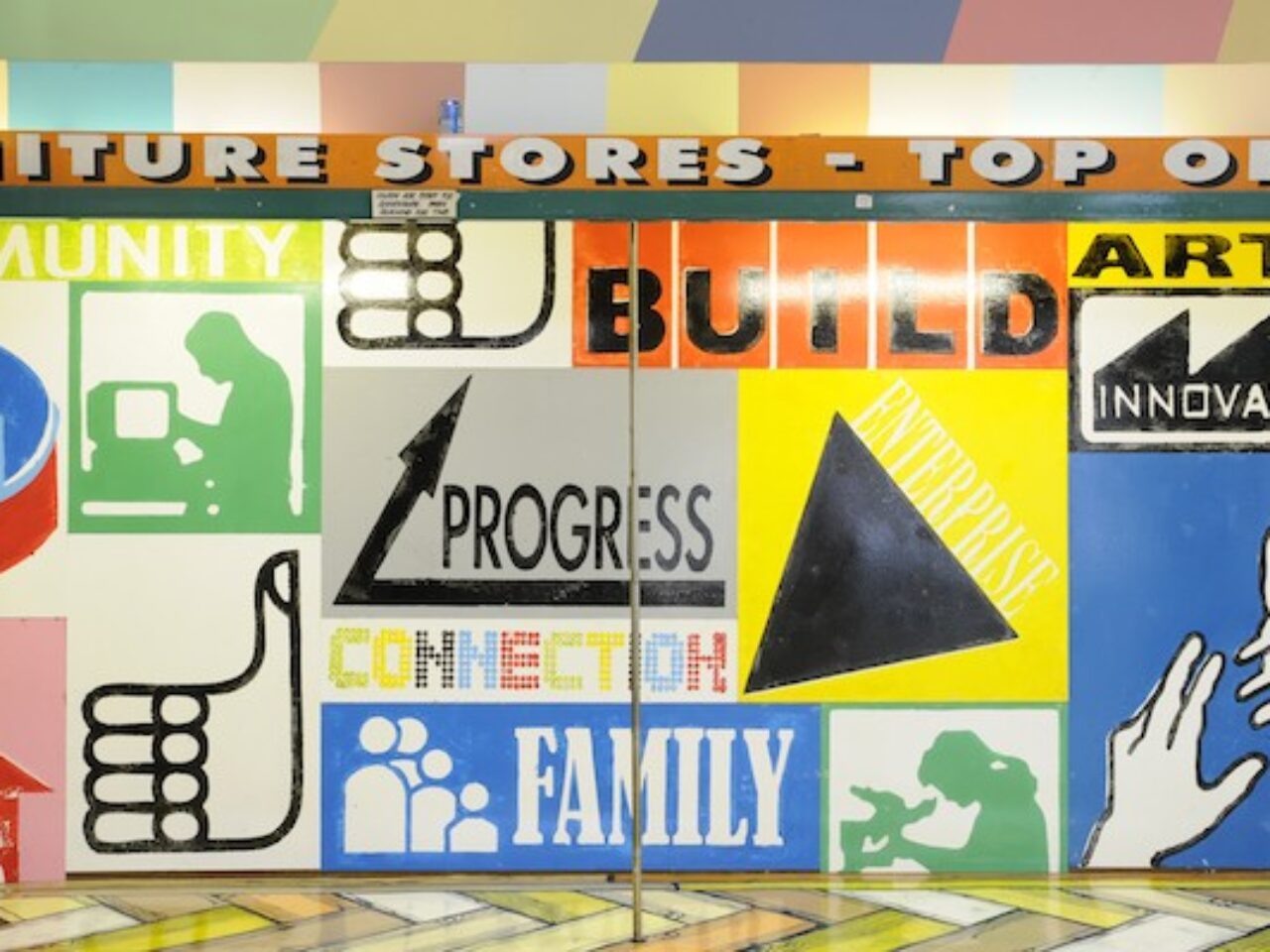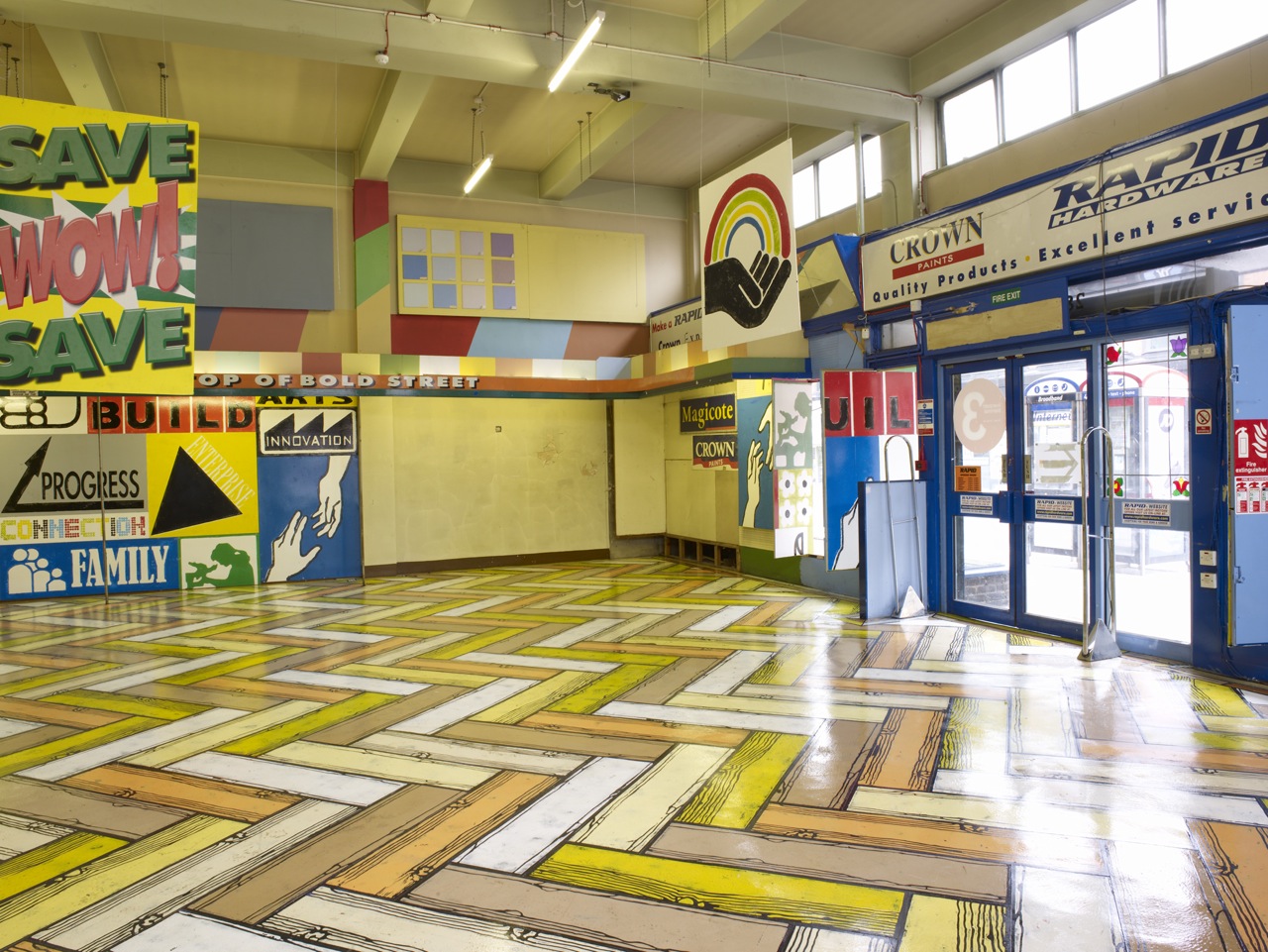Richard Woods has always been fascinated with architectural surfaces that are already at one remove from reality.
2008 Biennial Year Find out more
Laminate flooring, for example, whose thin veneer transforms concrete floors back into their wooden forebears; or mock Tudor architecture that’s been through any number of revivals since Elizabeth I died in 1603.
In Import / Export Sculpture (2003), Woods orchestrated a playful encounter between crazy paving and its Mediterranean terrazzo ancestor, covering the entire courtyard of a Venetian convent with a fake skin. In tune with its cheerful artificiality, Woods’ fake architecture is intended not to disguise, but to engage in humorous dialogue with the surface beneath. In New BUILD (2005) for example, Woods transformed the 14th century Long Room of New College, Oxford into a glossy red brick building, a play on the oldness of New College, as much as the term ‘red brick university’.
In his latest works, Woods turns his attention to the real manifestations of architectural skin, the hoardings and screen-printed wraps that surround derelict buildings and building sites in a printed aura of optimism. Woods’ imaginary logos hypnotise us with their confident array of monosyllabic assertions and positive pictograms. This is perhaps a natural evolution in a body of work that has consistently reduced surface to an instantly recognisable representation of itself.
Woods, interestingly, calls each of his floors a ‘Logo’, giving it an individual number in an ongoing series; a system which encapsulates the way in which each floor (like the wood it imitates) has its own unique pattern, and yet is infinitely repeatable. If Wood’s mock mock-Tudor celebrates the transformation of function into ornament, then this latest work recognises the capacity for a proliferation of logos to become emotional wallpaper.
In his piece for MADE UP entitled innovation-investment-progress (2008), Woods transformed the interior of a former DIY shop into a powerful statement of positive thinking. Like a visual mantra, the work saturated our field of vision with its repeated pattern of ‘feel good’ logos, playfully reworking the precise language of graphic print into something distinctly home-made.
innovation-investment-progress, 2008
Installation
Commissioned by Liverpool Biennial 2008
Exhibited at Rapid Paint Shop
SUPPORTED BY
Northwest Regional Development Agency
Calouste Gulbenkian Foundation
Merepark


